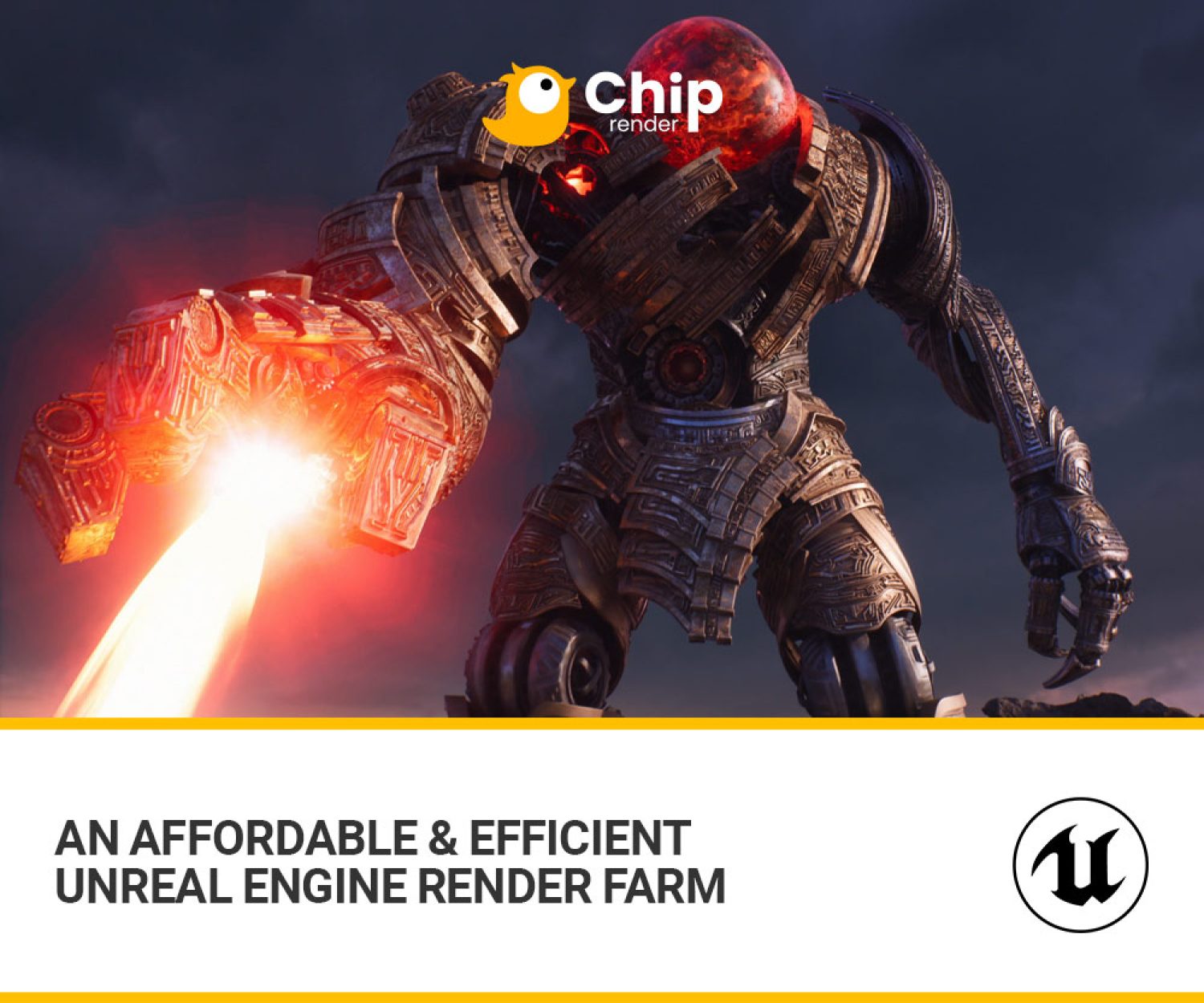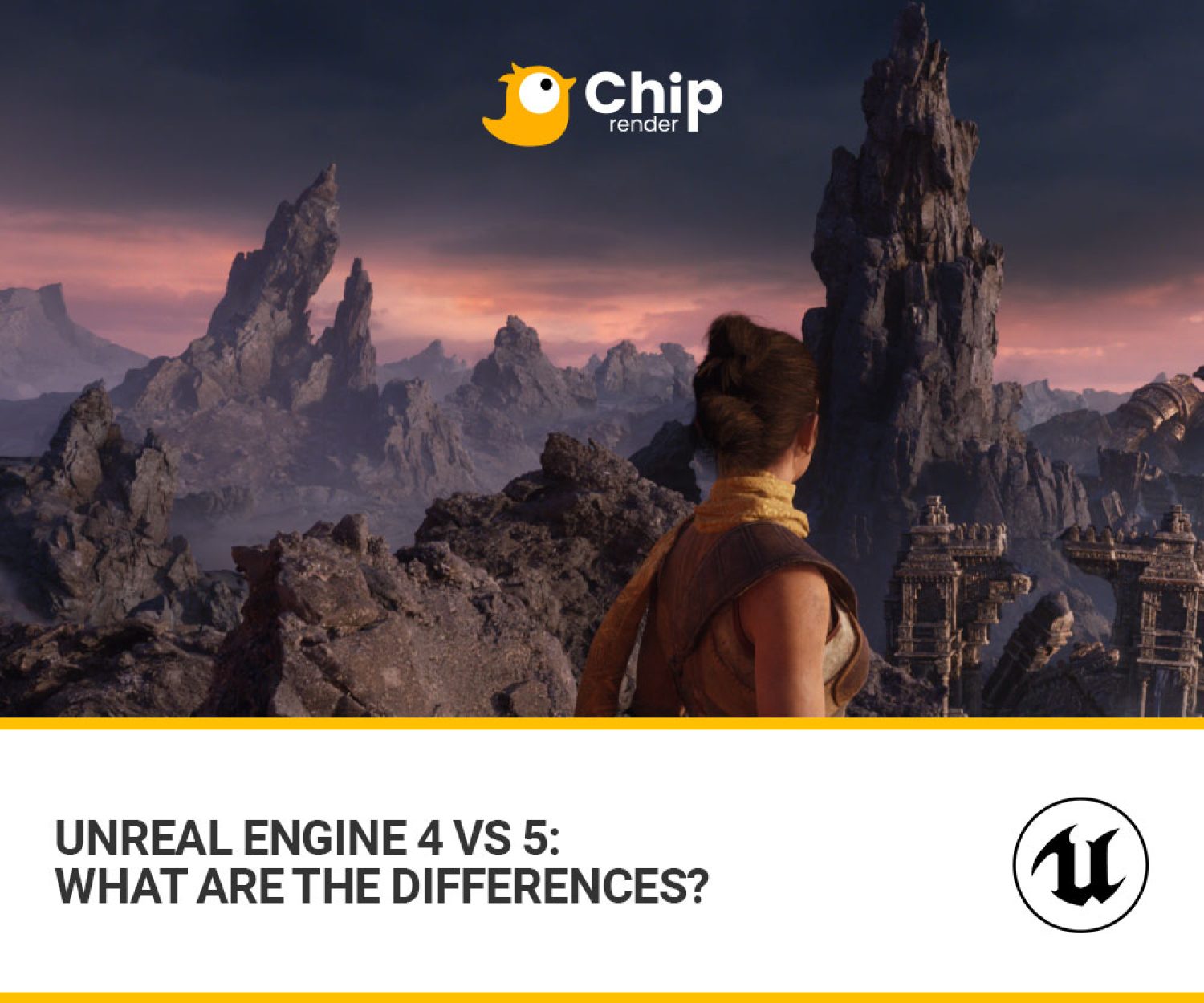In September 2023, Epic Games released the latest version of Unreal Engine 5 – Unreal Engine 5.3.
Unreal Engine 5.3 introduces an abundance of new features that further extend Unreal Engine 5‘s capability and potential for game developers and creators across industries.
The 5.3 release includes enhancements to the core UE5 toolset as well as enhancements to various areas, including Rendering, Worldbuilding, Procedural Content Generation (PCG), Animation and Modeling tools, Virtual Production, Simulation, and others.
In this post, Chip Render will take a closer look at some of the highlights of what’s new in Unreal Engine 5.3.
Core toolsets - What's new in Unreal Engine 5.3?
First of all, let’s discover the enhancements to the core rendering, developer iteration, and virtual production toolsets.
Enhancements to the core rendering
Epic Games refines the core UE5 rendering tools, allowing developers to use them at higher quality in games running at 60 frames per second on next-generation platforms. The enhancements also provide higher-quality results and improved performance for creators of linear entertainment.
Nanite, in particular, has faster performance for masked materials such as plants and can represent a wider range of surfaces thanks to the new Explicit Tangents option. Lumen with Hardware Ray Tracing, on the other hand, provides further possibilities such as multiple reflection bounces, and delivers faster performance on consoles.
In addition, Virtual Shadow Maps (VSM – which is now production-ready), Temporal Super Resolution (TSR), Hair Grooms, Path Tracing, and Substrate are further important developments.
Cine Cam Rig Rail
Unreal Engine 5.3 also added a new Cine Cam Rig Rail Actor. Filmmakers can now replicate the workflow and outputs of traditional camera movement on tracks or dollies.
It has more improved controls than the previous Rig Rail, including the ability to choreograph camera settings (such as camera rotation, focal length, focus distance, and so on) at several control points along the path. It is compatible with both in-editor and VCam workflows.
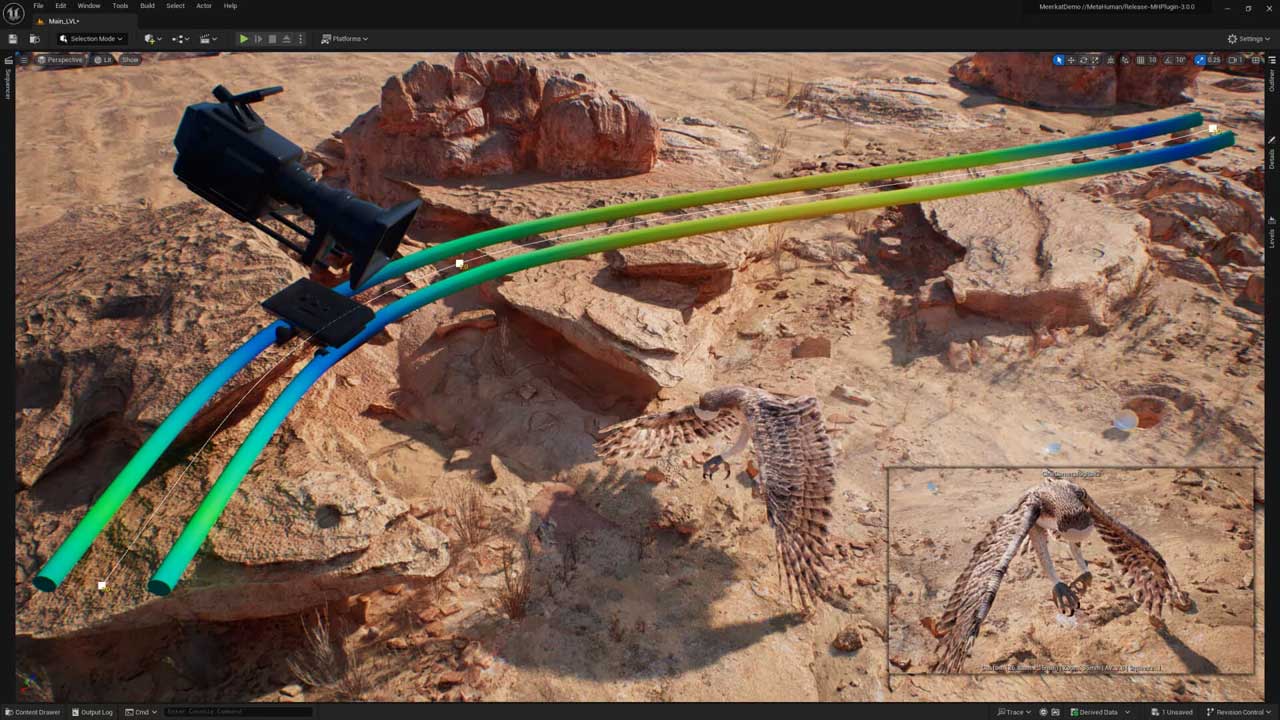
Cine Cam Rig Rail, image by Unreal Engine.
VCam enhancements
With VCam enhancements in Unreal Engine 5.3, you can now browse takes directly on the iPad for review or re-recording, which means faster iteration.
You can also stream multiple VCam outputs for different team members at the same time, allowing for collaborative VCam shoots. For instance, with camera controls for the camera operator but no camera controls for the director.
Moreover, you can record at a slower frame rate and replay at normal speed to capture fast-moving action more easily.
Multi-Process Cook
Last but not least, you now can use more CPU and memory resources when cooking content. In other words, when converting content from the internal UE format to a platform-specific format. As a result, Unreal Engine 5.3 significantly reduces the time required to obtain a cooked output from a build farm server or on a local workstation.
When you enable Multi-Process Cook, you initiate subprocesses that conduct parts of the creative task alongside the main process. Developers can choose the number of subprocesses to execute on a single system.
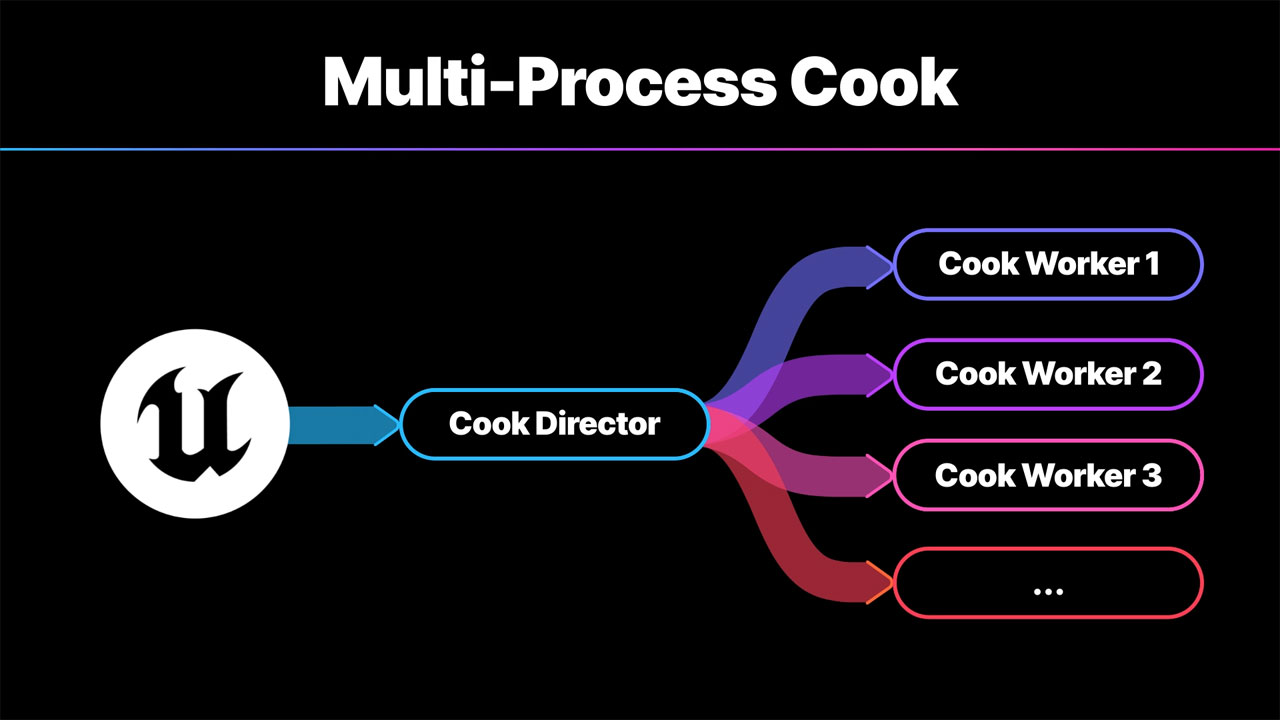
Multi-Process Cook, image by Unreal Engine.
Experimental features - What's new in Unreal Engine 5.3?
In addition to these updates to core toolsets, Unreal Engine 5.3 brings a variety of exciting new Experimental features. These Experimental features, however, require further development in future releases. Epic Games does not yet recommend using them in your creations.
Cinematic-quality volumetric rendering
Sparse Volume Textures (SVT) and Path Tracing of Heterogeneous Volumes are two new features that deliver new capabilities for volumetric effects such as smoke and fire.
Sparse Volume Textures allows you to store baked simulation data for volumetric effects. SVTs can be also simulated in Niagara or imported from OpenVDB (.vdb) files created in other 3D applications.

OpenVDB asset courtesy of JangaFX, image via Unreal Engine.
In addition, Path Tracer now has a more complete volume rendering support (though still experimental). For cinematics, films, episodic television, and other forms of linear content, you can use the Path Tracer to render high-quality volumes, including global illumination, shallows, and scattering.
Games, virtual production, and other real-time use cases can also begin experimenting with SVTs for playback of volumetric elements. Nevertheless, although performance is limited at this time and heavily dependent on the content.
Orthographic rendering
Starting in Unreal Engine 5.3, orthographic rendering is supported as an experimental feature. It offers orthographic projections as a stylistic camera choice for games and visualization, which is particularly helpful for architectural visualization and manufacturing projects.
It is available in the Unreal Editor and at runtime with support for most UE5 features, including Lumen, Nanite, and Shadows.
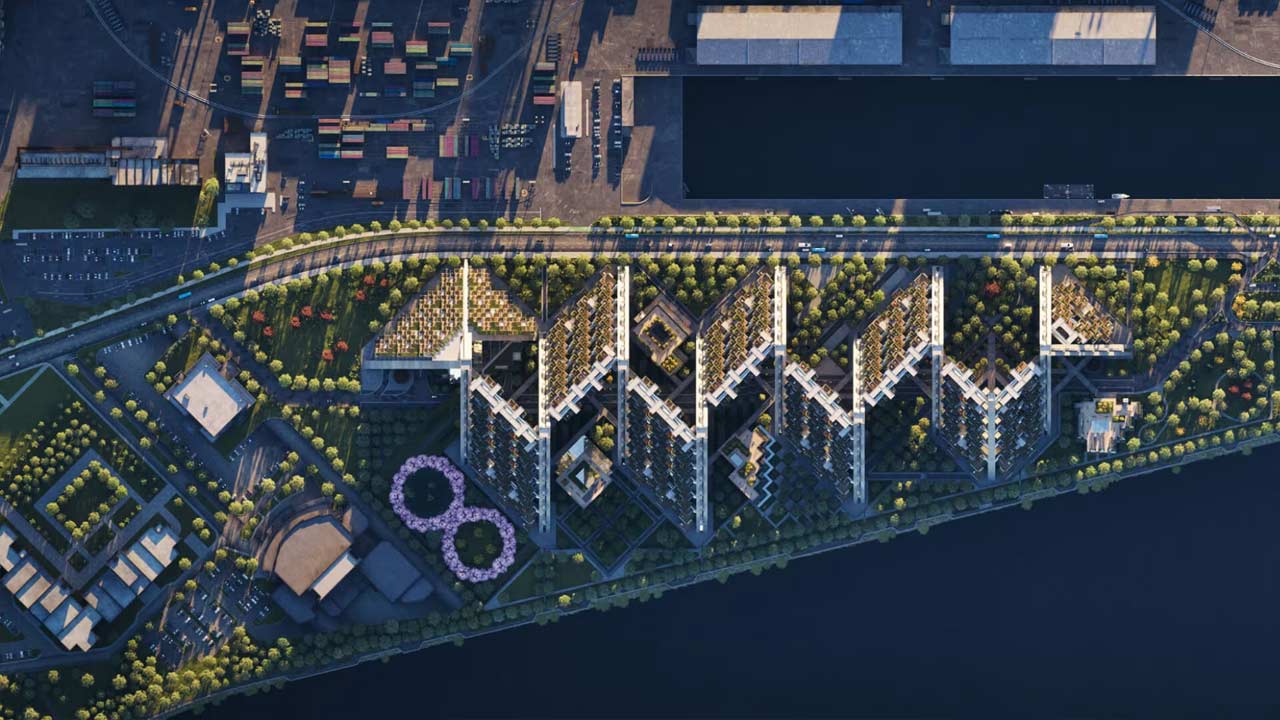
Orthographic render, image by Unreal Engine.
Skeletal Editor
Next, a new experimental Skeletal Editor gives you a number of tools for working with your skeletal meshes, including the option to paint skin weights.
Skeletal Editor allows you to do additional character workflows directly in the Unreal Editor, without switching to DCC apps, whether for rapid prototypes or final rigging. As a result, you can work in context and iterate faster.
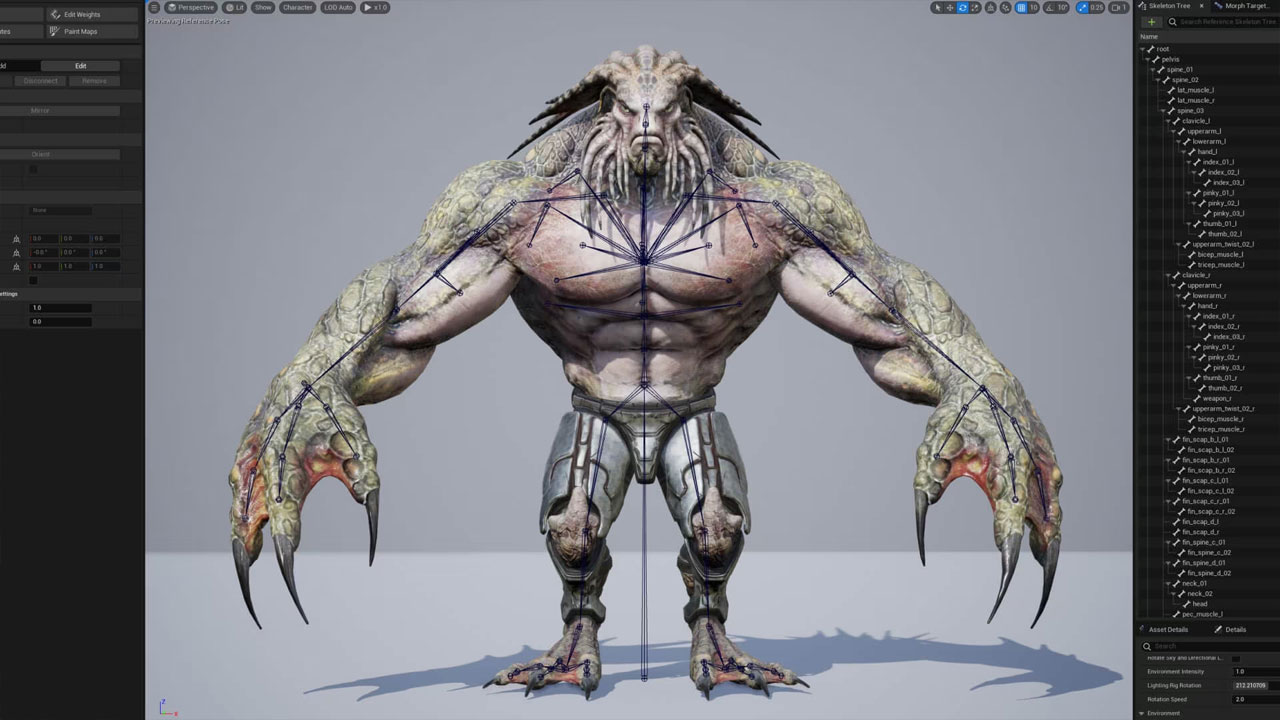
Skeletal Editor, image by Unreal Engine.
Chaos Panel Cloth Editor
Another experimental feature set includes a new Panel Cloth Editor and new skin weight transfer algorithms and added XPBD (extended position-based dynamics) limitations as a foundation for future cloth creation in the engine. This adds support for a non-destructive cloth simulation workflow where you can trade off speed for precision. Moreover, Chaos Panel Cloth Editor delivers better-looking simulations.
In addition, Cloth can now be simulated and cached in the engine using the ML (Machine Learning) Deformer.
SMPTE ST 2110 for ICVFX
Next is the new feature on the virtual production front. In preparation for the next generation of LED production stages, the developer team has added experimental support to nDisplay for SMPTE ST 2110, using NVIDIA hardware and Rivermax SDK. This establishes the framework for a variety of hardware configurations that enable new LED stage possibilities. This includes having a separate machine for each camera frustum, maximizing the possible rendering resolution, increasing frame rate, and allowing for more complicated scene geometry and lighting than before.
SMPTE ST 2110 support addresses difficulties such as wider angle lenses that require higher resolution and multi-camera shoots that strain current systems. It also indicates lower system latency due to signal chain simplification.

SMPTE ST 2110, image by Unreal Engine.
Wrap up
Above are just some of the highlights of what’s new in Unreal Engine 5.3. That includes improvements to existing core UE5 features and some exciting new experimental feature sets. Thanks to the new features and enhancements in Unreal Engine 5.3, you will have more potential for more creative workflows directly in the Unreal Editor.
If you want to see the full feature list, check out Unreal Engine 5.3 Release Notes. The full list covers new features in:
- Rendering
- Worldbuilding
- Procedural Content Generation (PCG)
- Developer Iteration
- Platform
- Character and Animation
- Virtual Production
- Simulation
- Audio
- UI Systems
- Modeling
- Content Pipeline
- Framework
- Engine Content and Templates
- Platform SDK Upgrades
 Chip Render Farm is one of the few cloud rendering services that support Unreal Engine. With our powerful IaaS model and 1/2/4 x GPU RTX 3090 servers, you will be able to speed up your UE projects several times. Join Chip Render now and have your own Cloud Workstation from only $2.9.
Chip Render Farm is one of the few cloud rendering services that support Unreal Engine. With our powerful IaaS model and 1/2/4 x GPU RTX 3090 servers, you will be able to speed up your UE projects several times. Join Chip Render now and have your own Cloud Workstation from only $2.9.

